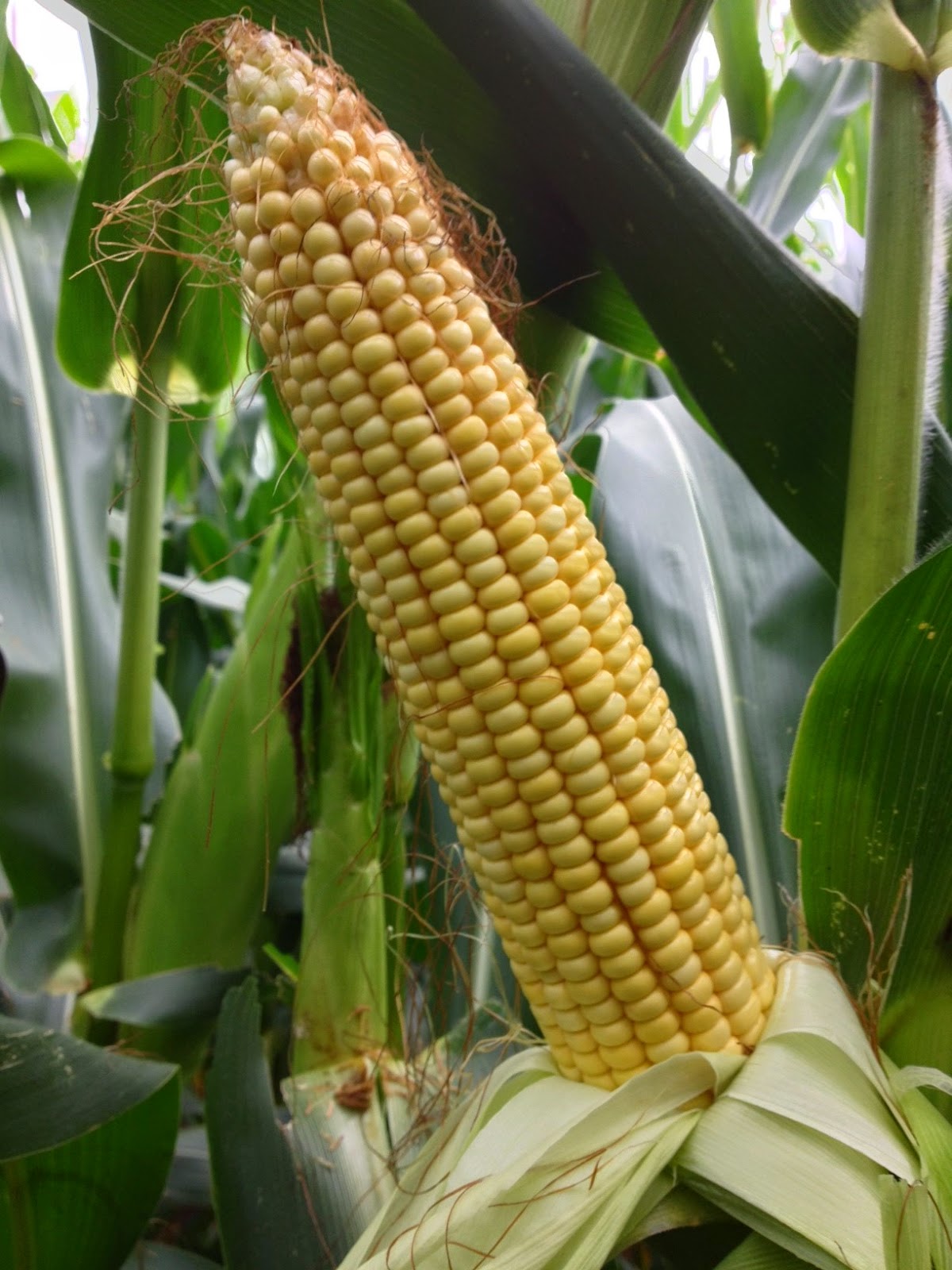Thanks to the wonders of digital photography date stamps I stumbled on some pictures I took last year on August 28 from a plot that was planted on May 3, 2013. In 2013 most of the corn crop was planted before the middle of May.
As a comparison, I thought it would be interesting to take some pictures of the same hybrids this year on the same date, August 28. I chose a plot that was planted on May 25 which coincides closely to the date when the majority of acres were planted in 2014. We must remember this is not meant to be a 100% valid comparison because we are talking about different fields and rotations, but I still find it educational.
No big surprise that this full season hybrid is now not as developed as it was last year. It was planted almost one month later. But what does this difference mean? There are two ways to look at it.
If we take the heat unit approach we see that by August 28, 2013 there were approximately 2500 heat units accumulated. This year adjusting for the later planting date we have accumulated approximately 2200 heat units by August 28. Does this tell us anything useful? No.
Let's consider the stage of the crop. The 2013 crop was in the dough stage while the 2014 crop is in the milk stage of development. How do we know? It is not that hard. The fact that kernels are just starting to yellow in the 2014 picture indicates the beginnings of rapid sugar accumulation in the kernel. This is the classic "sweet corn" stage. All sugars are very liquid and very tasty. There is no sign of an embryo.
In the late dough stage is the kernel is still very soft and mushy, but the embryo can be found.
The embryo is in the tip of the kernel. If you take the tip off and squeeze the kernel, the embryo will slide right out. This is shown below. The embryo is a hard, oval shaped structure.
The difference between the milk stage and the dough stage is about 12-14 days of development time.
The standard average time from silking to black layer formation is about 60 days.
Corn in early milk stage corn is about 45-48 days away from black layer, Dough stage corn is about 34-36 days away from black layer. This gives a more accurate answer to the question of where we are at.
My experience has taught me that September is an important month 9 years out of 10. We needed a good September last year and we got it. This year P0216AM will need a good September and some of October. This is not that unusual. It is very worth remembering that the average killing frost date for this area is October 7. One quick witted customer observed all that means is frost can happen any where from September 7 to November 7. He is 100% correct with that conclusion.
Earlier hybrids like P9807AM are more advanced than P0216AM. Very normal and what we expect to see. Does it mean much? If a killing frost happens before the end of September, yes it will mean that the earlier hybrid likely will have the advantage.
Seed companies are already starting to jockey and talk about how one hybrid is more advanced than another. "Our hybrid is denting and this competitor hybrid is not", which shows how smart we are, is the standard approach used. When I sold my corn last year I was paid for dry bushels delivered and I know that fact has not changed. We expect corn moisture to be high this fall and earlier hybrids will be drier, as they are almost every year. However, it is way too early to make too many predictions on hybrid performance.


.JPG)
.JPG)

No comments:
Post a Comment